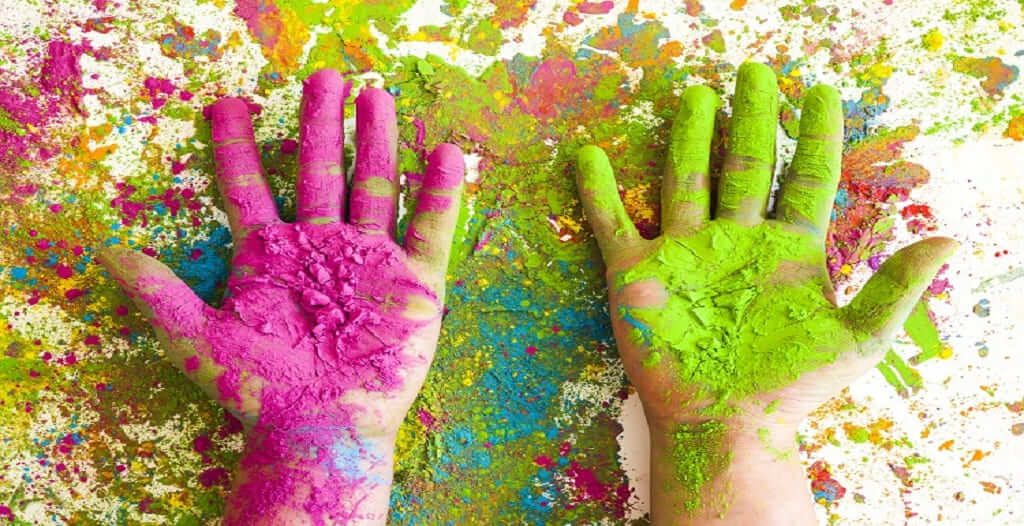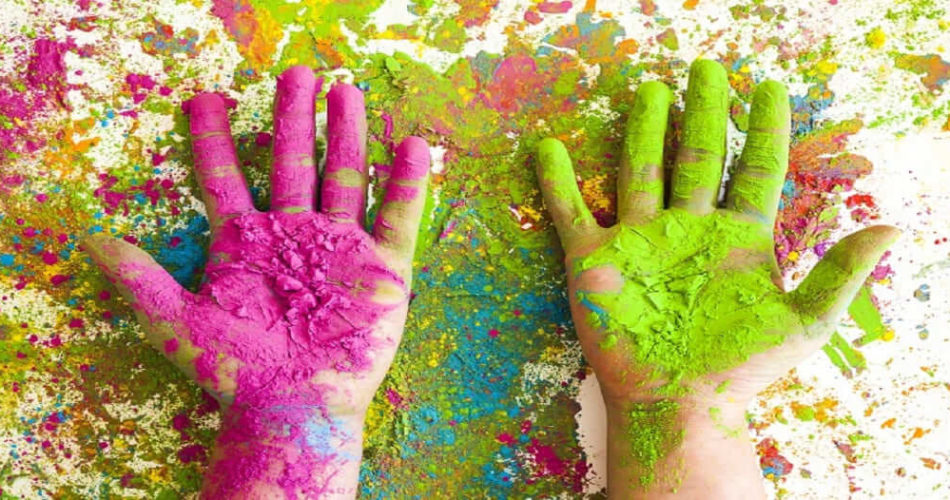Holi is a festival of Hindus. This festival is celebrated to depict the triumph of good over evil and is celebrated with joy and togetherness in India. This festival brings a lot of fun, music, dance, and of course lots of bright colours and delicacies for the people. It is celebrated with great pomp and show and with complete enthusiasm and joy throughout the country.
The UPSC candidates are required to have complete knowledge and details about this festival because the festivals have great significance in India. The examiners can ask this question in the interview round to check your knowledge. Holi falls on the full moon day in the month of Phalgun, i.e. February or March.
This occasion shows that the winter is at an end and the spring season is starting. Depending on the places and traditions, the festival of colours is known by different names. In different regions of India it is called Dhulendi, Lathmar Holi, Mohhalla Hola, Basant Utsav, Rangpanchami etc.
This festival also shows the harvest period of the crops. Farmers celebrate the occasion and show their respect towards God and seek blessings to have a good harvest. Let’s check complete information related to the Holi festival of colours.
Also Read: Wet Bulb Temperature UPSC: Why is This Trend All Over The News?
UPSC Essay on Holi
Holi is an ancient festival that has its mention in ancient Indian scriptures like Narada Purana and Bhavishya Purana. Their square measures many elderly paintings and murals within the ancient temples representing the festival of Holi. One of the foremost necessary legends related to Holi is the story of Bhakt Prahalad.
Prahalad was the son of the king of demons, Hiranyakashyap. In contrast to different demons, Prahalad was a passionate follower of Lord Vishnu. He worshipped Lord Vishnu day and night. Hiranyakashyap didn’t like his son’s devotion to God. He tried to prevent Prahalad from doing so by numerous means that, however, it was useless. Finally, he set out to kill Prahalad.
Hiranyakashyap used numerous suggestions to aim to kill Prahalad however eventually, Prahalad is saved by the mystical powers of Lord Vishnu. One such attempt was to win over Holika to kill her. Holika was the sister of Hiranyakashyap. She was endowed with a cloak (shawl) that made her resistant to damage by the fireplace. Hiranyakashyap asked Holika to sit down within the blazing fireplace, Prahalad in her lap.
Holika held the Visnu worshipper Prahalad in her lap and trapped him. Then, she sat on the fire. Prahalad continuously prayed to Lord Vishnu to keep him safe and not let him die. The cloak (shawl) flew because the fire roared and Holika burnt. Prahalad survived, unhurt. The Holika Dahan or Holi fire is a command to celebrate the triumph of good over evil.
However, there’s another legend that’s coupled to taking part in colours on Holi. Many believe that this tradition originated from Vrindavan. Many other people say that Lord Krishna was jealous of Radha’s white complexion and asked his mother Yashoda why she is thus truthful and why he’s so dark.
His mother jokingly advised him to stain the colour on Radha’s face and alter it to any colour he needed. Krishna proceeded to try this and therefore Holi as a play and celebration of colours were introduced.
There is a third legend that says that Lord Krishna killed the evil demon Pootna on the day of Holi. Lord Krishna’s maternal uncle Kansa knew that Krishna the eighth son of his sister Devaki- would finish his life.
Following the birth, the baby Krishna was transferred safely home to Nand and Yashoda in Gokul. Kansa sent many demons to kill baby Krishna. Once Pootna tried to give Krishna the poisoned milk, he sucked the life out of her. Evil Pootna fell dead on the ground. The tip of Pootna happened on the day of Holi.
This festival is the celebration of joy and love in the present scenario. People enjoy the occasion by putting colours on each other and sharing sweets. The most popular delicacy of this festival is “gujiya”. It is made with refined flour and is stuffed with solid condensed milk and dry fruits. This festival gives a feeling of love, togetherness, and joy to the people.
Also Read: Tribes of Nagaland: Checkout the Important Tribes, Festivals, Flora and Fauna of Nagaland
Significance of Holi
The significance of Holi in the Hindu culture is marked as the victory of good over evil because it has been celebrated in the story of Prahlad who was the son of the ruler of demonic Asuras, Hiranyakashipu. Hiranyakashyap didn’t like his son praying to Lord Vishnu.
He was blessed by God and earned a boon that he could not be killed either by a human or animal, neither indoors nor outdoors, neither at day nor night, neither by a weapon, and neither on land, water nor air. He wanted his son to worship him and on his son’s denial for the same, he subjected him to several cruel punishments. When his son didn’t agree with his thoughts even after getting the punishments, he called his sister to trick Prahlad by sitting on the fire.
The cloak of Holika that was to protect her flew away and she died whereas Prahlad survived. This story shows that goodness always wins over evil. Hiranyakashyap was also killed when Lord Vishnu appeared in the Narasimha avatar. This Avatar was created by Lord Vishnu to kill the devil by being half lion-half human so that he couldn’t be purely an animal or a human being.
He appeared at dusk, took Hiranyakashyap by the doorstep, and placed him on his lap to kill him with the lion claws. The history of Holi lies in this story. The Holika fire is also burned a day before Rangwali Holi to celebrate the victory of good over evil.
Also Read: List of Tribes in India: How Many Tribes are there in India?
Conclusion
Hopefully, the article has given you all the details related to the significance of Holi and the ways to celebrate it. If you are looking for more information regarding other festivals, traditions, or government policies in India, visit the UPSC Pathshala website. You can fetch all the knowledge on the website. Also, comment in the box given below to ask your doubts.







